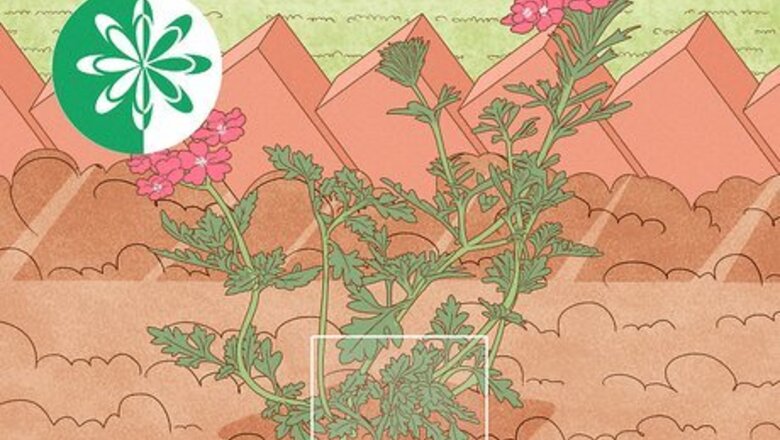
views
Cutting Back in Early Spring
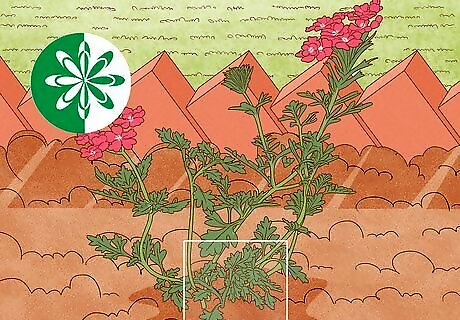
Wait until you start seeing new growth in the spring. This will usually occur after the last frost. You may notice new green shoots along the base of the plant or leaves growing on the stalks. This is a sign that you should cut back.
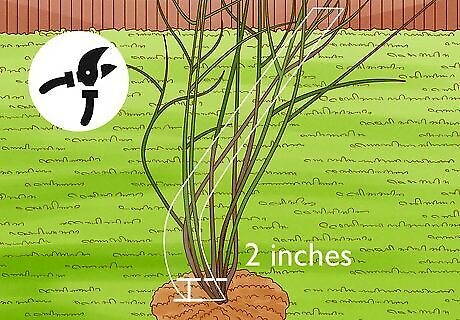
Trim old stems down to 2 inches (5.1 cm) above the ground. Older stems are often long, woody, and hard. Use hedge trimmers to these down in favor of newer greener growth, which will usually only be a few inches high. This will let new shoots grow fuller while preventing old shoots from overtaking the plant. You only need 2 inches (5.1 cm) of the stems to remain. The plant will grow back quickly at this point if you cut it back close to the ground. If you see any new shoots coming out of the old stems near the ground, cut just above these. Make sure to wear protective clothing, like gloves, when trimming in the garden.
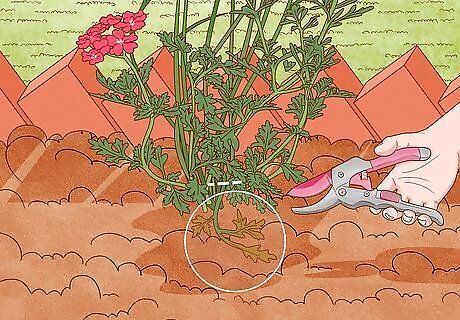
Remove any dead growth near the ground. Look for stems or growth that have turned brown or are drooping or dragging on the ground. Cut off the dead growth at the ground. Toss these clippings into a compost pile or throw them away. If you see any mold or discolored patches on the leaves, cut these off, as they may be signs of disease.
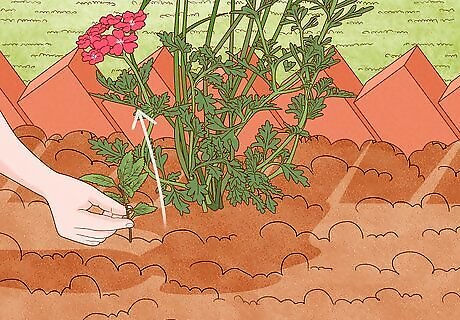
Pull out any seedlings. This will keep the plant from propagating. Verbena spreads its seeds very easily, and before you know it, your garden may be overrun. Around the base of your plant, look for cross-shaped seedlings. Pull these up from the ground if you don’t want them to grow.
Encouraging New Growth in Summer
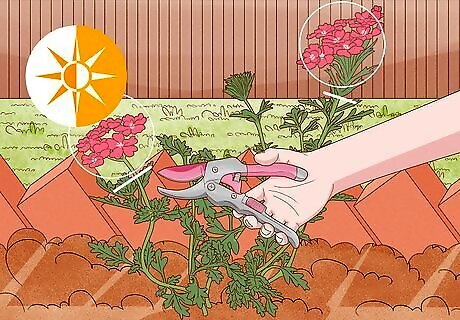
Start after the first bloom in summer. This usually occurs in the middle of the season. Verbena plants often have brilliant first blooms, but if you don’t trim these, the plant may not produce more flowers over the summer. Don’t be afraid to trim the plant while the first blooms are still in place. By pruning it back early, you will get blooms throughout the summer and autumn.
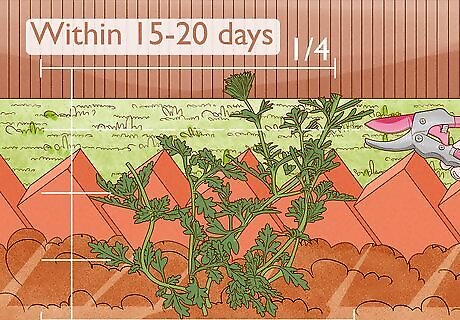
Trim the entire plant by one-quarter of its height. Use gardening shears or hedge trimmers. Cut back from the top of the plant, not the bottom. Within 15-20 days, you will have new blooms and growth to replace the old growth. This usually only needs to be done once after the first bloom. Make sure to wear protective clothing, like gloves and long sleeves, before trimming the plant.
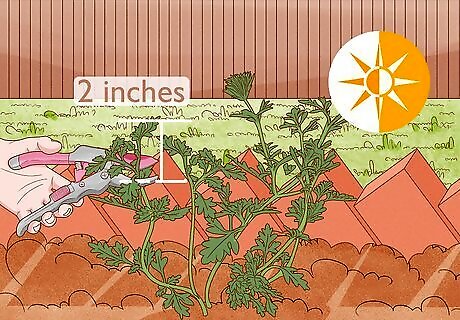
Continue to lightly prune the tips of the plant throughout summer. Verbena can grow very quickly, so you may need to trim it back to control growth throughout the season. To do this, cut about 2 inches (5.1 cm) off the ends of the plants where you want to control growth. You can do this about 2-3 times over the season or as needed. This is called tipping the plant. It can help the plant branch out, which will give you a fuller, bushier verbena plant instead of a sprawling or patchy plant.
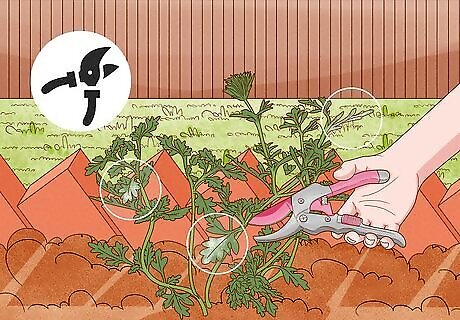
Remove any leaves that have powdery mildew. Verbena plants are generally hardy against disease, but if you've had a wet summer, you may need to remove any growth with powdery mildew. Look for white, dusty patches on the leaves. If you see any, pinch the leaves off or prune off the branch. Make sure to disinfect your shears both before and after pruning diseased plants with rubbing alcohol. You may need to apply a fungicide or neem oil to your verbena to get rid of the powdery mildew entirely.
Deadheading in Autumn
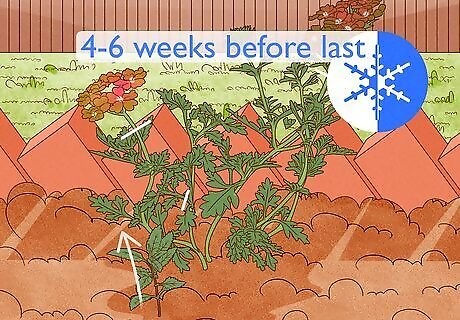
Aim to deadhead the plants about 4-6 weeks before the last frost. Consult an almanac or a weather service to see when the last frost usually occurs in your area. If you’re unsure about the dates, plan to deadhead early in the autumn. Deadheading is the process of removing dead flowers, growth, or seed heads. This will help your plant grow new flowers next year.
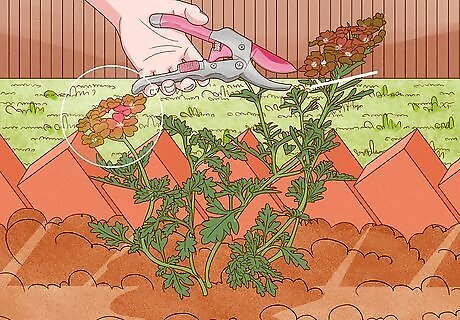
Cut dead or drooping flowers off at the base. As the flowers begin to droop, fade, or die, cut them off at the base of the flower. You can also twist the stem and pinch the flowers or seed heads off. Throw them in a compost pile or in the trash.
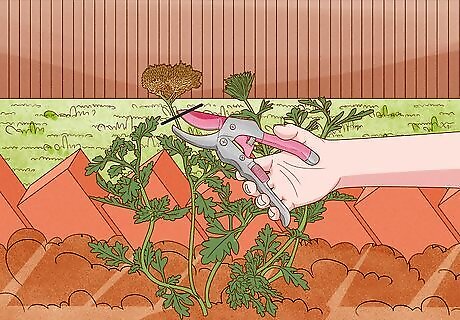
Remove seed heads unless you want the verbena to propagate naturally. Seed heads are the top of the flower that contains the seeds after the petals have died or fallen off. Removing the seed heads keeps your verbena from spreading its seeds. If you want verbena to spread across your garden, don't remove the seed heads. If you allow the verbena to propagate naturally, you won’t be able to control the spread of verbena, but the new seedlings may be hardier and more drought resistant than verbena grown from clippings. Some people prefer to leave seed heads in winter because it helps liven up the winter garden. If you prefer this look, remove any seedlings when you cut back the plant in spring.
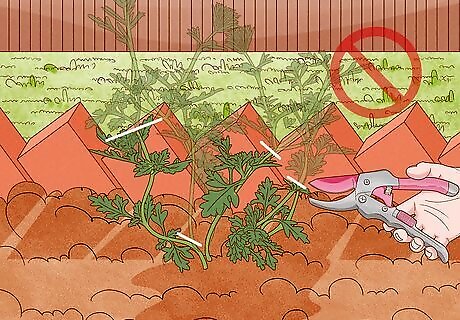
Avoid heavy pruning in autumn to help the plant survive in winter. While deadheading is useful in autumn, avoid doing any heavier trimming than that. This will help the verbena survive the winter. Save any additional pruning for early spring of the next year.
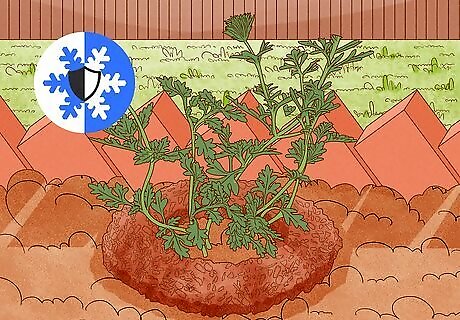
Add mulch around the plant to protect it during winter. Once you have finished deadheading, add a layer of mulch around the base of the plant. You can use a mulch that contains wood shavings, leaf mold, or compost. This will help protect the verbena in the winter.
















Comments
0 comment